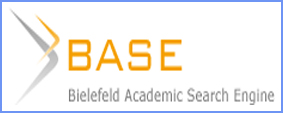Hubungan Berat Badan Lahir Rendah dengan Kejadian Asfiksia Neonatorum di Klinik Fatiha
DOI:
https://doi.org/10.31004/emj.v3i1.22064Keywords:
Berat Badan Lahir Rendah (BBLR), Asfiksia NeonatorumAbstract
In Indonesia, of all infant deaths, 57% die at <1 month of age, where every 6 minutes 1 baby dies. The causes of death of newborn babies in Indonesia are low birth weight babies, asphyxia, birth trauma, neonatal tetanus, congenital abnormalities and other infections. Neonatal asphyxia is a condition where a newborn cannot breathe spontaneously and regularly, which can reduce oxygen and further increase carbon dioxide levels, which can have bad consequences in later life. The aim of this research is to determine the relationship between Low Birth Weight (LBW) Babies and the incidence of Neonatal Asphyxia at the Fatiha Clinic in 2022. This research design uses quantitative research methods with a case control approach. Case samples were taken using total sampling technique and control samples using simple random sampling. This research was carried out at the Fatiha clinic. The research population of all babies in the Fatiha clinic was 174 babies. There were 33 babies who experienced neonatal asphyxia and 141 babies who did not experience neonatal asphyxia. The research used a secondary data check list sheet. Univariate and bivariate data analysis using the chi square test. These results show that there is a relationship between low birth weight babies and the incidence of neonatal asphyxia. The P value for low birth weight babies is 0.000 < 0.05. The advice in this research is that pregnant women are expected to be diligent in carrying out pregnancy checks so that complications are detected early during pregnancy and can anticipate or prevent things that may occur during pregnancy until deliveryDownloads
Published
2024-02-11
How to Cite
Salni, I., Harahap, D. A., & Syahda, S. (2024). Hubungan Berat Badan Lahir Rendah dengan Kejadian Asfiksia Neonatorum di Klinik Fatiha. Evidence Midwifery Journal, 3(1), 13–18. https://doi.org/10.31004/emj.v3i1.22064
Issue
Section
Articles
License
Copyright (c) 2024 Evidence Midwifery Journal

This work is licensed under a Creative Commons Attribution-ShareAlike 4.0 International License.










